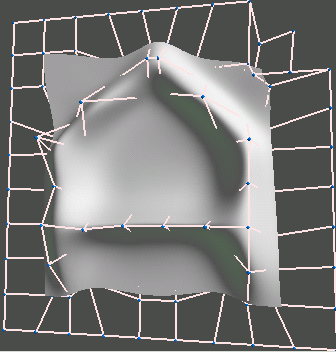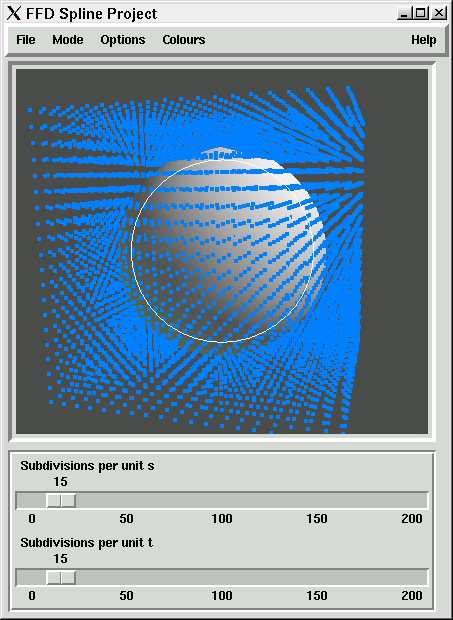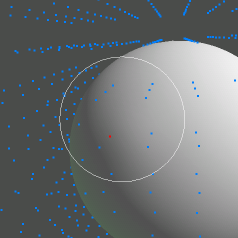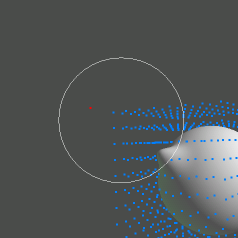Discussion
Using B-Splines to do Free-form deformations has several advantages. Foremost
among them is that they guaranee continuity between one region of deformaton
and another. They are also fast and allow for local rather than global
control of the deformation. This power comes with a price. Using
too fine a grid results in deformations that are hard to control.
References
Thomas W. Sederberg and Scott R. Parry,
Free-Form Deformations of Solid
Geometric Models Computer Graphics, 20 (August 1986) 151-159
Hsu, William M., Hughes, John F., and Kaufman, Henry,
Direct
Manipulation of Free-form Deformations, ACM SIGGRAPH (July 1992)
177-184
Hagenlocker, Michael and Kikuo Fujimura,
CFFD:
a tool for designing flexible shapes, The Visual Computer, 14 (1998)
271-287






